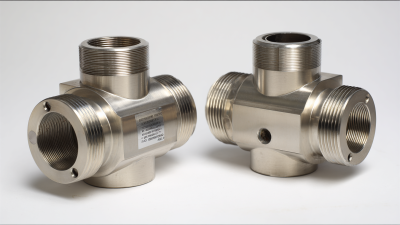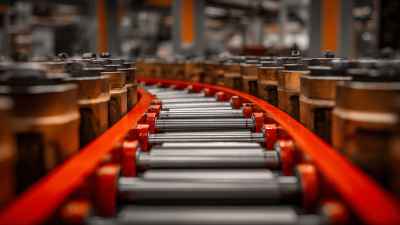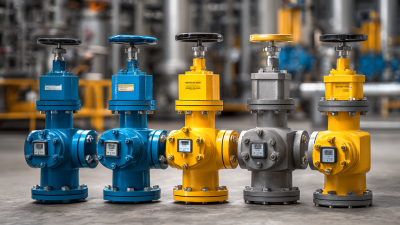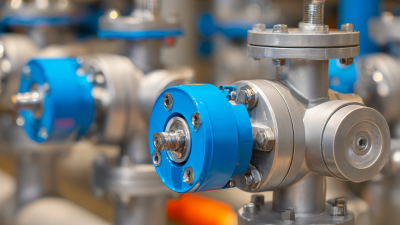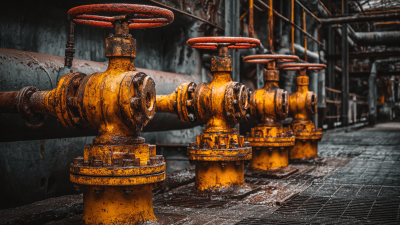
In today's rapidly evolving industrial landscape, the significance of sanitary check valves cannot be overstated, particularly in sectors such as food and beverage, pharmaceuticals, and biotechnology. According to a report by Grand View Research, the global sanitary valves market is projected to reach $4.5 billion by 2027, driven by the increasing demand for hygienic processing and stringent regulatory requirements.
 Sanitary check valves play a crucial role in ensuring the integrity and safety of fluid systems by preventing backflow, thereby maintaining product quality and compliance with health standards. As industries strive for efficiency and safety, the versatility of sanitary check valves across various applications highlights their importance in fostering operational excellence and innovation in fluid management systems. Understanding their diverse applications is essential for professionals aiming to enhance system performance and ensure regulatory compliance in their respective fields.
Sanitary check valves play a crucial role in ensuring the integrity and safety of fluid systems by preventing backflow, thereby maintaining product quality and compliance with health standards. As industries strive for efficiency and safety, the versatility of sanitary check valves across various applications highlights their importance in fostering operational excellence and innovation in fluid management systems. Understanding their diverse applications is essential for professionals aiming to enhance system performance and ensure regulatory compliance in their respective fields.
Sanitary check valves play a crucial role in various industries, ensuring that fluids flow in the intended direction while preventing backflow. These valves are designed to meet stringent hygiene standards and are commonly used in food and beverage, pharmaceuticals, and biotechnology sectors. Understanding the different types and designs of sanitary check valves is essential for ensuring product integrity and safety. The two primary types include swing check valves, which utilize a disc that pivots on a hinge to allow or block flow, and spring-loaded check valves, which employ a spring mechanism for quicker response time and reliable closure.
The design of sanitary check valves can vary significantly based on their intended use. For instance, some valves feature a smooth body design that minimizes areas where bacteria can accumulate, making them ideal for sanitary applications. Others may have special sealing elements designed to withstand high temperatures or aggressive chemicals. Additionally, the choice between threaded, flanged, or clamp connections can impact the installation process and maintenance routines across different industries. By leveraging the unique attributes of each design, facilities can optimize their operations while complying with health and safety regulations, ultimately enhancing productivity and ensuring consumer trust.
| Industry | Application | Type of Sanitary Check Valve | Material | Size Range |
|---|---|---|---|---|
| Food Processing | Liquid Transfer | Spring Loaded Check Valve | 316 Stainless Steel | 1" - 4" |
| Pharmaceutical | Clean Water Systems | Diaphragm Check Valve | PTFE, 316 Stainless Steel | 0.5" - 3" |
| Beverage Industry | Carbonated Beverage Production | Piston Check Valve | Brass, Stainless Steel | 1" - 2" |
| Chemical Processing | Corrosive Liquid Handling | Inline Check Valve | Hastelloy, PVC | 1/2" - 4" |
| Water Treatment | Waste Water Management | Swing Check Valve | Ductile Iron, Epoxy Coated | 2" - 12" |
Sanitary check valves play a crucial role in various industries, particularly in food and pharmaceutical applications. These valves are designed to ensure the flow of liquids while preventing backflow contamination, making them essential for maintaining the integrity of high-quality products. In the food industry, where hygiene is paramount, sanitary check valves help ensure compliance with strict health standards while enabling efficient processing and packaging of consumables.

The pharmaceutical sector significantly benefits from sanitary check valves as well. According to industry analysis, the diaphragm valve market, which includes sanitary check valves, is projected to grow from USD 4.59 billion in 2025 to USD 6.51 billion by 2034. This growth indicates a heightened demand for reliable and sterile fluid control solutions, essential for drug manufacturing and safe delivery systems. The increasing focus on safety standards and innovations in manufacturing processes within these industries further drives this trend, demonstrating the indispensable role of sanitary check valves in ensuring product safety and quality.
Sanitary check valves play a crucial role in numerous industries, ensuring that product quality and safety are maintained throughout production and processing. These devices prevent the backflow of contaminants, thereby safeguarding the purity of the fluids and materials involved. For instance, in the food and beverage sector, sanitary check valves are essential in preventing cross-contamination during the mixing and storage of ingredients. By effectively isolating different production lines, they help meet stringent safety regulations and product standards.

In the pharmaceutical industry, the stakes are even higher. The integrity of medications and active ingredients is paramount, and any compromise can lead to significant health risks. Sanitary check valves help maintain a sterile environment by allowing only one-way flow, thus preventing the ingress of impurities. Their design ensures easy cleaning and maintenance, which is crucial in environments that demand the highest levels of hygiene. With their diverse applications, sanitary check valves not only enhance process efficiency but also uphold the fundamental principles of safety and quality in critical industries.
When it comes to ensuring the integrity and hygiene of fluid transfer systems, sanitary check valves play a vital role across a variety of industries, from food and beverage to pharmaceuticals. Proper installation is critical in maximizing their effectiveness.
Firstly, it's essential to ensure that the valve is installed in the correct orientation, aligning the flow direction with the arrow marked on the valve body. This alignment prevents backflow and ensures optimal performance. Additionally, using compatible sealing materials and employing appropriate torque levels during installation helps to achieve a tight seal, reducing the risk of contamination.
Regular maintenance practices are equally important for prolonging the life of sanitary check valves and maintaining system efficiency. Routine inspections should be scheduled to check for signs of wear, leaks, or corrosion. Cleaning the valves according to manufacturer specifications is crucial, especially in industries that demand high standards of hygiene.
Utilizing proper cleaning agents and methods can help prevent the accumulation of biofilms and deposits, which could compromise the valve function. By adhering to these installation and maintenance best practices, industries can ensure their sanitary check valves operate effectively, safeguarding the quality of their products and processes.
The landscape of sanitary check valves is continuously evolving, driven by innovative technologies that enhance both performance and reliability across various industries. Recent market reports suggest that the global sanitary valves market is projected to reach $7.1 billion by 2025, with a significant portion attributed to advancements in check valve technologies. These innovations include improved material compositions that resist corrosion and build-up, which are particularly vital in the food and beverage sector where hygiene is paramount.
One notable development is the integration of IoT (Internet of Things) technology in sanitary check valves, allowing for real-time monitoring and predictive maintenance. According to a report by Mordor Intelligence, 67% of manufacturers are exploring sensor-based solutions to minimize surprise downtimes and optimize operational efficiencies. By utilizing smart technologies, industries can ensure that their sanitary check valves maintain ultra-clean performance and reliability, ultimately driving better compliance with health regulations and improving product quality.
